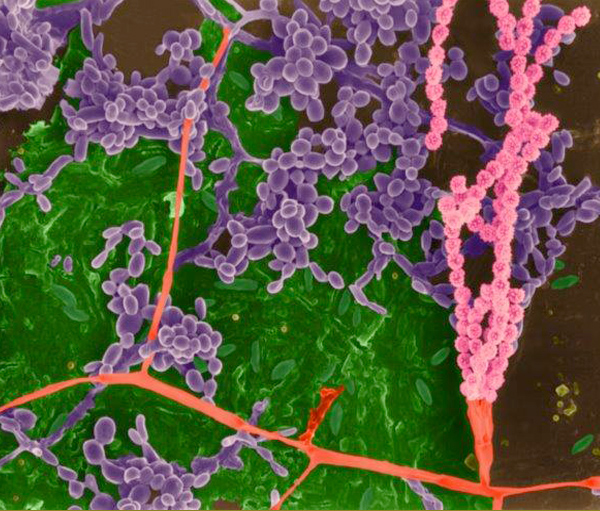
© Dennis Kunkel Microscopy
Norovirus is the recently approved official genus name for the group of viruses provisionally described as "Norwalk-like viruses" (NLV). Norovirus is a group of positive DNA calcivirus.
What diseases are caused by Norovirus?
Infection with norovirus manifests as a mild diarrhea associated with nausea, vomiting, abdominal cramps, malaise, headache and low-grade fever. The disease is usually self limited and lasts 1-3 days. Infection with norovirus is commonly known as stomach flu and viral gastroenteritis.
Who is more susceptible to infection from Norovirus?
All individuals are susceptible to Norovirus. However, Norovirus is more common in infants, and is the most common cause of diarrhea in children of the ages 1-5. It is also the primary cause of food borne outbreaks in day care centers.
Epidemiology of Norovirus
Norovirus induced diarrhea is transmitted by the fecal-oral route and is transmitted via contaminated food and water and also hand to mouth behavior in infants of contaminated objects. It is the most common cause of diarrhea in all ages under 18, and constitutes 2/3 of all diarrhea cases in children between 6-24 months. Shellfish, salads, raw clams and oysters are the foods most commonly implicated in the spread of Norovirus during outbreaks. Recently, highly publicized outbreaks on cruise ships have been identified. However, this is due in part to surveillance. Outbreaks at schools, prisons and health care facilities also occur and when investigated, Norovirus has been identified as the causative organism.
Incubation Period
The incubation period usually is between 24-48 hours after consumption of affected food or water; and the disease lasts anywhere between 24-60 hours.
Diagnosis
The virus is commonly identified from stool specimens of infected individuals. The organism can then be identified by direct visualization, immunoassay or PCR identification of the stool sample.
Treatment
The disease is usually self limited and treatment is supportive with plenty of fluids to prevent dehydration.
Contact EHA Consulting Group today for more information about how we can assist your company.
We offer services for
- Retail Food Safety
- Restaurant Food Safety
- Manufacturers
- Food Trucks
- Drugs & Cosmetics
- Melons & Cantaloupes
- Produce
- Warehouses
- Food Packaging & Packaging Materials